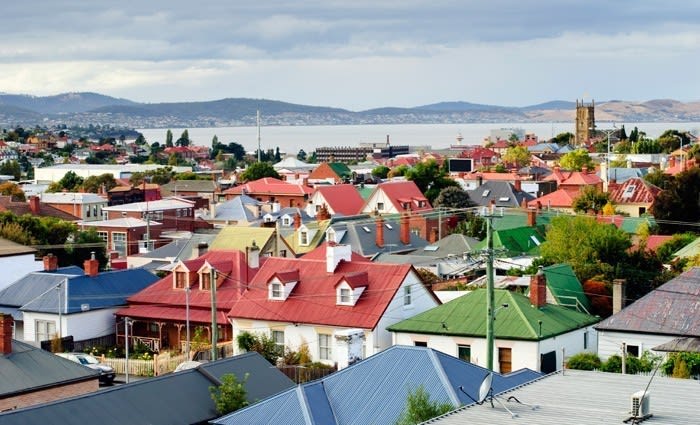Asking prices in Sydney nevertheless moved higher than a month earlier, both for houses and units.
Nationally total listings are -4.3 per cent lower than a year ago, however, driven by excessive annual declines in the firing Melbourne and Hobart housing markets.
Both monthly and annual listing numbers are also now in decline in Perth, suggesting that it's only a matter of time now before prices begin rising again in Western Australia, especially in light of the commodity markets rebound.
Listings in Melbourne have now broadly fallen from ~50,000 to ~30,000 since 2012, with listings a massive -15.3 per cent lower year-on-year, suggesting that house prices will continue to surge in the Victorian capital.
In Hobart listings have plummeted some -20.2 per cent lower since August 2016, with now just 2,520 listings across the entire capital city market and a surfeit of willing buyers, both locally and from interstate.
House prices are recording gains of ~15 per cent per annum across Greater Hobart.
Simon Pressley, founder of Propertyology, notes that gains in inner metropolitan Hobart have been tracking at closer to ~20 per cent per annum.
Supply sluggish
Hobart is a relatively small capital city of about 225,000 persons.
Normally, one would associate such a rapid run-up in demand and house prices with a decisive supply response.
Hobart is not a mainland city, however, and some larger developers may be a little more reluctant to get involved, due to logistics and cost.
To date the increase in dwelling approvals has been muted to say the least, suggesting that the Hobart price boom will likely continue well into 2018.
SQM sees more first homebuyers entering the market in New South Wales and Victoria, drawn in by first homebuyer grants, but more stock likely to be hitting the market too.
GDP to be solid
In other news, the current account deficit widened in the second quarter to $9.6 billion on weaker commodity prices - albeit from a tremendously improved position - while net foreign debt declined for another quarter.
Exports exceeded imports, however, and are expected add +0.3 percentage points to GDP growth when the national accounts are released today.
Furthermore there was a very strong +2.2 per cent increase in public demand, set to add another +0.5 percentage points to GDP.
Thus, despite the significant drag from inventories, Westpac now expects quarterly GDP growth to be around +1 per cent.
And with a negative quarterly print to drop off in due course, GDP growth now seems likely to surge into the end of 2017.
One other interesting point of note for the phantom rate hike brigade to take note of, the Reserve Bank Governor noted in his dinner speech that the Board had considered the merits of lower rates still, but appears to have held off to allow the heat in the Sydney housing market to ease (which it now has).
PETE WARGENT is the co-founder of AllenWargent property buyers (London, Sydney) and a best-selling author and blogger.
His latest book is Four Green Houses and a Red Hotel.
